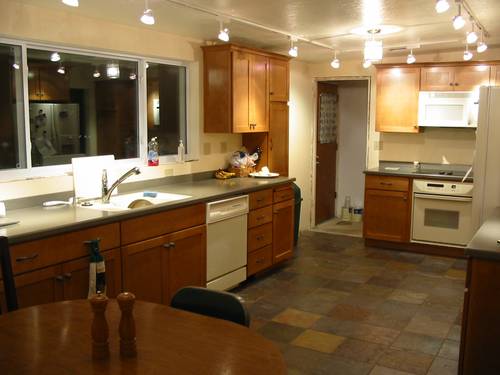Keeping your kitchen up to date can add to its usability and your enjoyment of it. If you renovate your kitchen, the kitchen sink may be one of the most significant choices you make. Base your decision not only on what you can afford, but also on kitchen size and functionality.
Sink Styles
The choice of sink installment types includes drop-in, apron or undermount sinks. Drop-in sinks install from the top and support themselves by the rim of the sink on top of the counter. These are easy to install but create a seam on the counter that can be tricky to clean.
Undermount sinks eliminate the problem of a countertop seam by allowing the counter to extend over the edge of the sink. This is a cleaner style, although a seam still exists under the lip of the counter.
The integrated style is a high-end, streamlined option that is easy to clean. You can expect to pay more for this style, however, because of the materials used and because the sink and counter are one piece. The type of material used for this style, however, is prone to damage from scratching, chipping or hot cookware.

Another style gaining in popularity is the apron sink. Also called “farmhouse” sinks, these hearken back to a simpler time. If an old-fashioned theme is not your preference, however, they come in many styles to create a contemporary look.
While choosing the look of your sink, consider the size and type of sink that will best serve your needs. The traditional two-bowl type is designed with dishwashing in mind. The single oversized basin style accommodates large pots. Some kitchens are big enough for multiple basin sinks or two separate sink stations. These options are best for keeping food preparation and dishwashing separate from each other. Consider the overall size of your kitchen and don’t let the sink overpower it. Functionality is the most important aspect, and style should not get in the way.
Materials
When choosing materials for your new sink, naturally, the décor of the kitchen will influence your choice. Cleaning ease, price and durability factor in, as well. Popular choices include stainless steel, porcelain, acrylic, enamel-coated cast iron or solid surfaces, like marble or quartz. There are even sinks made from treated wood.
You can find a basic stainless steel drop-in sink for about $100. Composite sinks cost at least twice that amount and higher. Durable ceramic-coated cast iron is more expensive, and solid surface sinks can be affordable or pricey. Predictably, the more exotic the material, such as wood or marble, the more money you can expect to pay.
Faucet Styles
As with sinks, faucet styles come in a wide variety. The most popular and wear-resistant finishes include chrome, brushed metal and bronzed. Styles include single-lever or two-handle styles, or even a model that simply needs to be touched to turn it on. Motion sensor faucets are also available, although not as popular. Note that the easier it is to turn a faucet on, the easier it is to turn it on by accident. Also, the more advanced the technology of the faucet, the more it will cost. To get a basic, good quality faucet, expect to pay at least $120. The price will go up as you add features and quality. For instance, a spray head adds to the functionality and price of the faucet, as either a separate or an integrated component.
While shopping for your kitchen sink, you will find many options. It may help to remember to base your final decision on functionality first. Then you can put the fun in functional by choosing your favorite look.
Charlie Teschner started MESA Plumbing, Heating, and Cooling in 1982. Charlie has a journeyman and master plumber’s license. He was raised with a strong work ethic and he now applies those values to tasks such as heating repair in Boulder.
